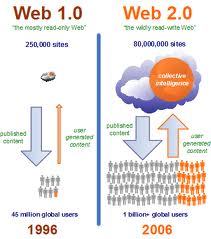Reflective
Synopsis
E-Learning is the
learning of new information through the use of online or digital technology. It
facilitates learning for today’s digital natives by allowing students to be
engaged in a real word context. It helps to cater to a multitude of learning
styles and needs by providing tools that students of today see as valuable. According
to ACARA (2012), “ICT’s are fast and automated, interactive and multimodal, and
they support the rapid communication and representation of knowledge to many
audiences and its adaptation in different contexts. They transform the ways
that students think and learn and give them greater control over how, where and
when they learn”. This reflective synopsis will address how frameworks along
with learning styles, teacher responsibilities and different types of
technologies can be used to achieve optimal results in the classroom. All of
the technologies used can be used in the collaborative construction of
knowledge.
The framework that
best supports digital pedagogy is the TPACK framework. TPACK stands for
Technological, Pedagogical and Content Knowledge. The TPACK framework revolves
around the idea that for a learning manager to successfully teach students in a
digital world three sectors must be addressed. Learning managers must possess
technological knowledge, in other words they need to know how to use the
technology they wish to use in their classroom. They also need pedagogical
knowledge, so they need to know how they are going to teach a concept using
that technology. Finally they need content knowledge, so they need to know how
using that piece of technology will achieve the curriculum requirements (Mishra and Koehler, 2006). The following link will take
you to some further information about the framework from my week 2 blog.
Learning
styles and theorists are other considerations learning managers need to
consider when planning for digital classroom activities. Behaviourist, Connectivist
and Social Constructivism are all theories that have their merits and pitfalls.
I really connect with George Siemens Connectivist theory and the idea that the
content of a pipeline isn't nearly as important as the pipeline and connections
themselves. In other words, what’s in our brains at this very minute is not
nearly as important as our capacity to make connections and learn new content.
Without the ability to learn, the brain is simply just an empty pipeline. According
to Laurillard (2008), traditional education needs to be explored in relation to
the new world of global knowledge and mobile technology. The use of technology
in the classroom is also a great way of combatting the issue of different
learning styles in the classroom. In just one lesson the ability to include
auditory, kinaesthetic and visual options is highly increased with the
availability of digital tools. More information about each theory and a
learning styles test can be found here.
Some of the technologies
explored include websites, wiki’s, blogs, images, video, Prezi, PowerPoint,
Glogster, iPads and mobile phones. One of the biggest challenges learning
manager’s face when using this technology is ensuring that they and their
students are working legally, responsibly and ethically. Copyright laws,
permissions for photo use, internet content and cyber bullying are just a few
of the possible problems learning managers must consider when planning work
that involves the use of technology. It can be a scary and daunting experience
for learning managers if they have not familiarised themselves with these
requirements.
While the use of
technology in the classroom is a fantastic tool, it isn't without its
limitations. There are a number of complexities that arise with the use of
digital tools. It doesn't always work! There will be days that the internet won’t
load or the computer won’t turn on or the iPad wasn't charged. While some of
these problems can be preempted, it essential that learning manager’s realise
that digital pedagogy won’t always be easy and it won’t always work. It is
equally important that learning managers know their own abilities and
limitations. In a world where students are now digital natives it is important
now than ever that the skills of the learning manager are at a high standard.
To be able to
successfully use these technologies in the classroom it is essential that
learning managers spend some time getting to know the tools they want to use. According
to Turner-Bisset (2001) ‘In recent years, the emphasis in effective teaching
and in teacher education has moved away from the knowledge needed, to the skills
and processes of teaching’. Essentially, it comes back to the TPACK framework,
know the content, have the skills to teach the content and know how to use the
technology. Our own personal beliefs, knowledge, pedagogy, skills and work
ethic will all affect the impact ICT’s can have on student outcomes. Through understanding
how to use these technologies learning managers are helping to transform,
support and enhance the learning of all students.
Tarina
Tarina
ACARA (2012).
Information and Communication Technology
(ICT) Capability. Retrieved from
Downes, S. (2012)
Connectivism: Downes on Connectivism and Connective Knowledge.
Retrieved from: http://www.connectivism.ca/
Laurillard, D.
(2008). The Pedagogical Challenges to Collaborative Technologies. International
Journal
of Computer-Supported Collaborative Learning, 4(1), 5-20.
Mishra, P.,
Koehler, M.J. (2006). Technological Pedagogical Content Knowledge: A
Framework for Teacher Knowledge. Teacher College Record 108 (6), p.
1017-1054. Retrieved from http://moodle.cqu.edu.au/mod/page/view.php?id=60596.
Smith, R., Lynch,
D., Knight, B.A. (2007). Learning
Management - Transitioning Teachers
for National and International Change. Frenchs Forrest, NSW: Pearson
Education Australia Incorporated.
Turner-Bisset, R.
(2001) Expert Teaching : knowledge and pedagogy to lead the profession (p 1-19)
London: Fulton Publishers









.jpg)








.jpg)

